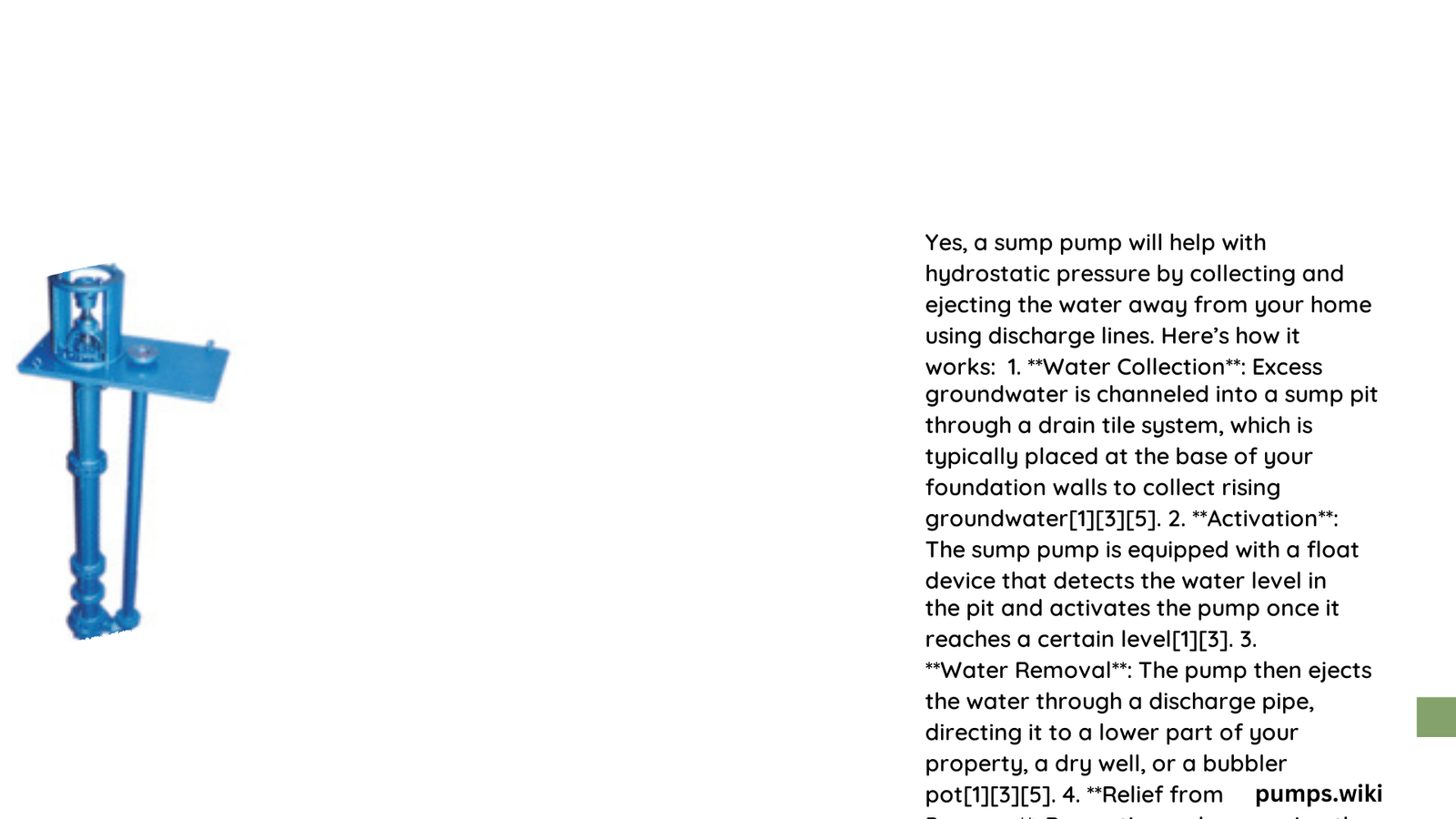Hydrostatic pressure poses significant risks to basement structural integrity, causing water infiltration and potential foundation damage. Sump pumps serve as a critical component in water management, offering a proactive solution to redirect accumulated groundwater and prevent moisture-related complications in residential and commercial structures.
What Exactly is Hydrostatic Pressure?
Hydrostatic pressure represents the force exerted by water against foundation walls and basement surfaces. When groundwater accumulates around a building’s foundation, it creates substantial lateral pressure that can lead to:
- Structural wall cracks
- Water seepage
- Potential foundation deterioration
- Moisture-related health risks
Can a Sump Pump Effectively Reduce Hydrostatic Pressure?

Sump pumps provide partial mitigation against hydrostatic pressure by:
- Water Removal Capabilities
- Extracting accumulated water from basement areas
- Redirecting water away from foundation
-
Preventing water buildup around structural perimeters
-
Performance Metrics
| Pump Type | Gallons Per Hour | Effectiveness Rating |
|———–|—————–|———————|
| 1/3 HP | 2,500 GPH | Moderate |
| 1/2 HP | 3,500 GPH | High |
| 3/4 HP | 4,500 GPH | Very High |
What Are the Limitations of Sump Pumps?
While sump pumps offer significant benefits, they are not a complete solution for hydrostatic pressure management:
- Reactive, Not Preventative
- Manages water after accumulation
- Does not address root cause of water intrusion
-
Requires complementary drainage systems
-
Dependency Factors
- Electrical power requirements
- Maintenance needs
- Pump capacity limitations
How to Maximize Sump Pump Effectiveness?
Recommended comprehensive strategies include:
- Install interior French drain systems
- Implement exterior waterproofing membranes
- Ensure proper grading around foundation
- Maintain consistent pump maintenance
- Consider battery backup systems
What Additional Drainage Solutions Complement Sump Pumps?
Integrated approaches for hydrostatic pressure management:
- Perimeter drainage systems
- Exterior waterproofing
- Landscape grading modifications
- Foundation crack repair
- Moisture barrier installations
What Factors Influence Sump Pump Performance?
Critical considerations include:
- Basement depth
- Local water table levels
- Soil composition
- Annual precipitation rates
- Foundation design
Cost and Investment Considerations
Estimated Investment Range:
– Basic Sump Pump: $200 – $500
– Professional Installation: $1,000 – $3,000
– Comprehensive Drainage System: $5,000 – $15,000
Professional Recommendations
- Conduct professional basement assessment
- Choose high-capacity pump models
- Implement multi-layered water management strategy
- Schedule regular maintenance
- Monitor system performance annually
Conclusion
Sump pumps represent a valuable tool in managing hydrostatic pressure, but they are most effective when integrated into a comprehensive water management approach. Homeowners should view them as one component of a holistic strategy to protect their property’s structural integrity.
